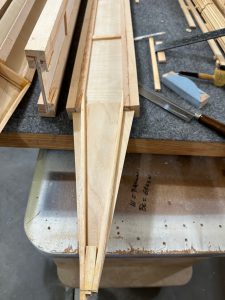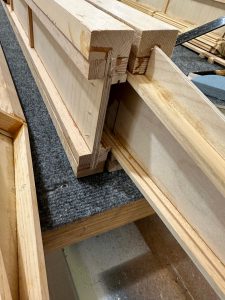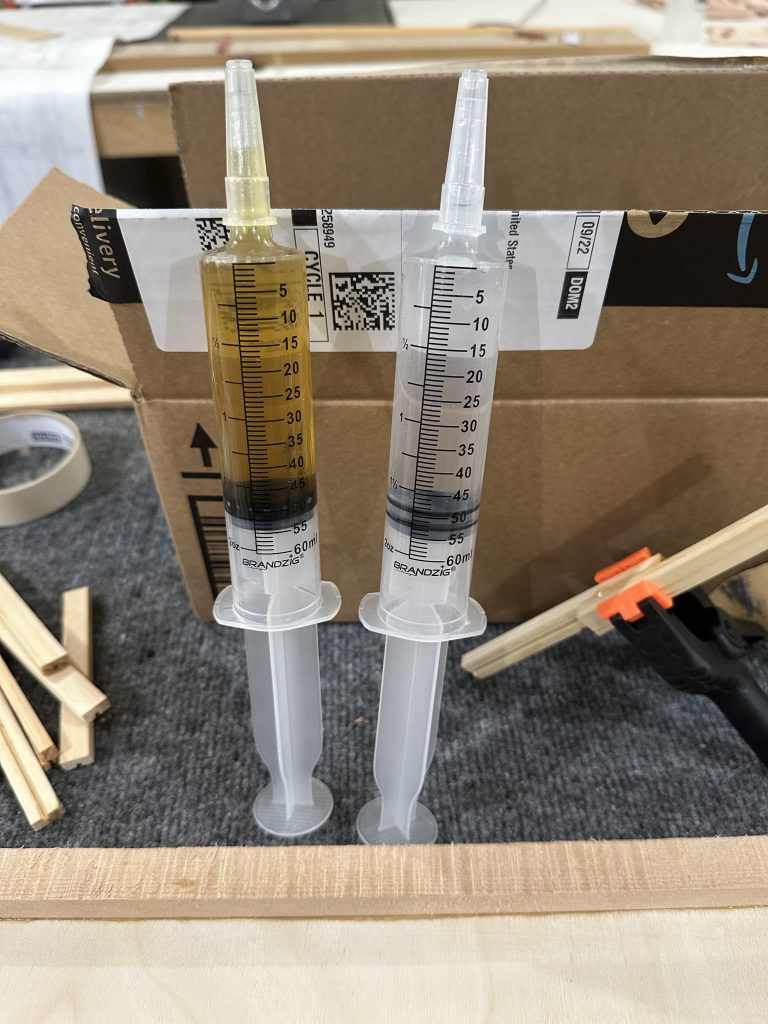I’m getting really tired of not being able to get any building done. This has really been driven home for the past few weeks of non-building. During the summer there’s plenty of yard work and other projects to fill int he gaps and keep one from getting bored. When it’s this cold, though, it becomes obvious that something has to be done. Rather than dive into a “just do something, anything” mentality that invariably leads to a big stalled mess, I’ve been taking the time to figure out exactly what the obstacles are and how they can be overcome.
Obviously, one of the biggest factors is space. There wasn’t any. The garage is packed pretty full, but a lot of it is just clutter. Over the past couple of weeks I’ve been cleaning things up, putting things away, figuring out what can be tossed, and just generally rearranging things. I have a day or two left to go on the big parts of that effort. Right now I have about half a garage space completely cleared, and will extend that another couple feet as I get rid of some junk that needs to go. I also plan to move the riding mower from the garage to the back patio, and cover it with an all-weather cover I bought for it. I have some rodent repellant balls I’ll use to try and keep mice and squirrels out of there… we’ll see how that works. The balls are strongly scented with peppermint and some other stuff; it’s non-toxic and doesn’t stink. I’ve also got two tool chests that I’m swapping around and getting all of the tools organized. I’m terrible about not putting tools away, and as a result they tend to end up scattered everywhere, and I’m trying to fix that.
The next issue is climate control. It’s a garage. The temperature out there is more moderate than it used to be, since we insulated the walls and ceiling several years ago when the new siding was installed. Still, it gets too hot to work out there during part of the summer, and too cold in the winter. Epoxy won’t cure properly when it’s 40 degrees in the garage, and working in 90-plus heat or refrigerator temps leads to careless and sloppy work. I’ve got a 1500W infrared space heater going out there now to keep it at sweatshirt temperatures just so I can get the cleanup done, but a betters solution is going to be required. I’m looking at installing a ductless mini-split heat pump. That will require a new 220 V circuit installed, and some cabinets will need to move, so as one might imagine it just leads to a stream of new projects and complications. I do have a. plan, though, even if its implementation is not as quick as I’d like. I’m also going to need to seal up the garage doors better than they are — the rubber seals are old and leaky. I suspect we’ll probably end up with new garage doors, which we’ve been wanting for a while anyway.
Then there’s the work table situation. There is none. I’ve been looking at what I’ll need for tables to assemble the upper wings, tail, and fuselage. I have full size prints for everything, so I know that a 3′ wide table will be enough or everything. Wider would be good for wings, but 36″ will cover the distance from the trailing edge to the main spar, so it’s enough. I already know I’ll need at least 10′ for the wings. That will also be enough for the tail; the biggest piece is the horizontal stab and elevator at 8′ span. So, a 10 foot long table will be enough for everything up until I start the fuselage. For that, I’ll need 14 feet (I just checked the drawing; it’s 13′ and change). That’s probably a year out, though. After discussing with Stu, I’m currently planning to build a work table with folding wings on each end, similar to the one in his shop. He’s suggesting a 36 x 60 inch table with 36 x 30 inch wings; that will end up 10′ long when fully extended. When it comes time to build the fuselage, I’d need to add a second, smaller table to extend it to the length required. A standard 24 x 60 inch EAA 1000 table should be enough for that; I can build one if nobody has one I can borrow for a couple of months.
Lastly, there’s storage. Right now, in order to move everything home I’ll need a place to store wood and parts. The longest pieces are the eleven-foot-long upper wing spars. There’s a lot of 6- to 8-foot stock, a stack of wing ribs, and so on. I need to set up something accessible on one wall of the garage to store that stuff. Also, I’ll need other load of lumber for the tail and fuselage; that will need to be stored as well. I’m thinking I may place an order with Aircraft Spruce and drive out to Oshkosh this year to bring it home in the truck. I haven’t been to Airventure since 2018, I think, so it’s about time for another trip out there anyway. I’m also scouting for lumber yards tat would carry good quality southern white pine, as that can be used for a good portion of the fuselage and tail according to Fisher.
Onward. I’ve been spending a lot of time in the garage getting things cleaned up, organized, and re-organized. I want to get this under control and get back to building ASAP.




